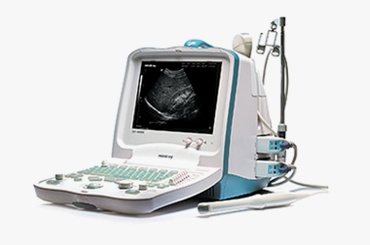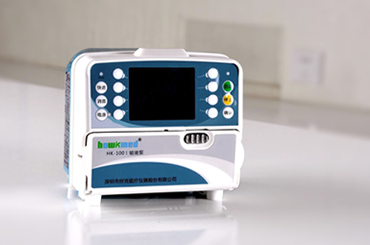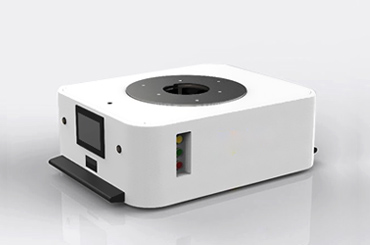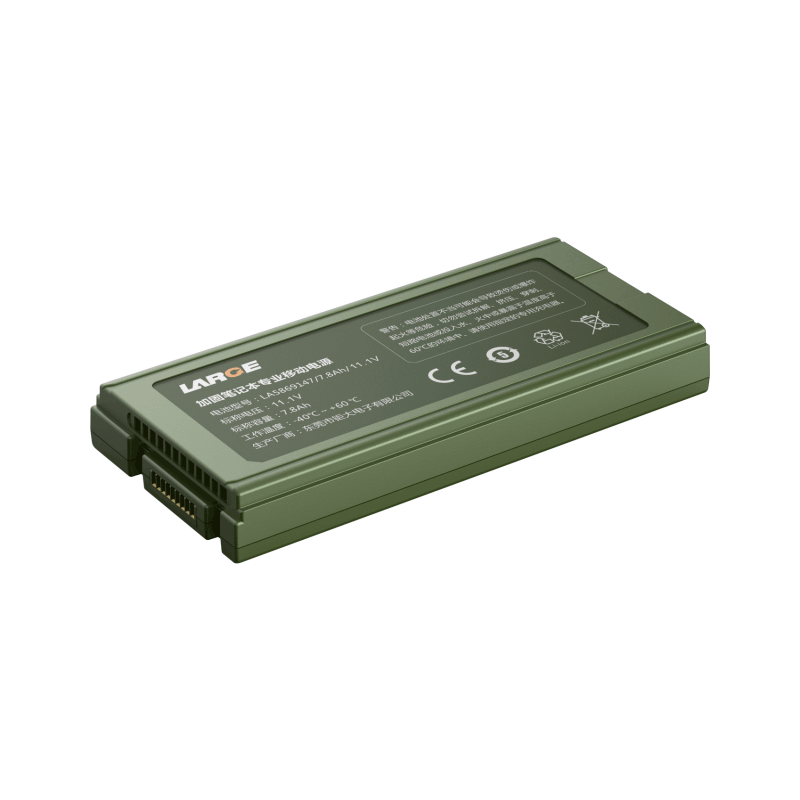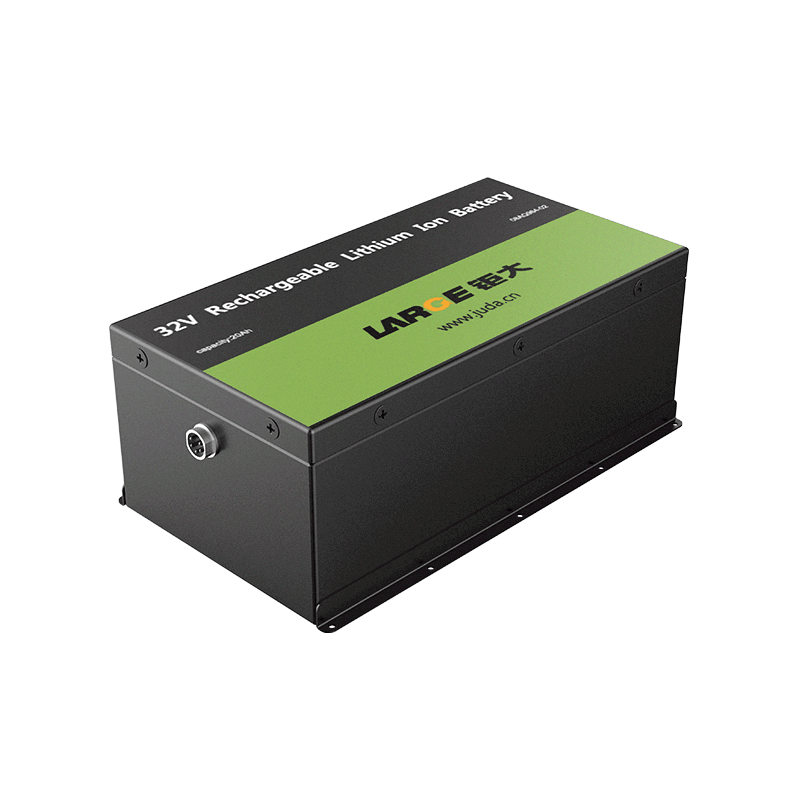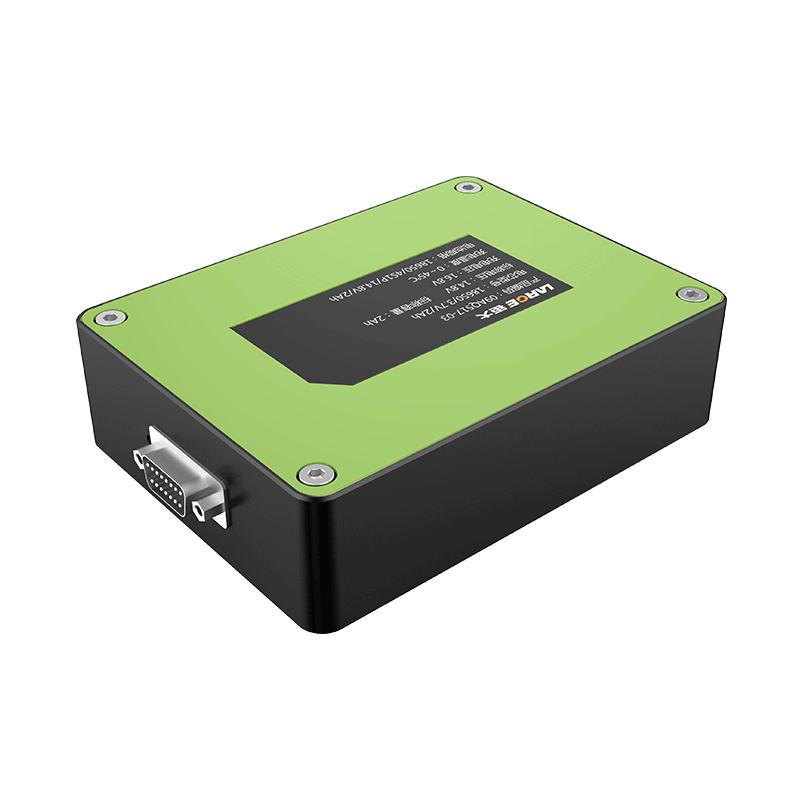-
Key Takeaways
-
Part 1: Understanding Self-Discharge and How to Store Lithium Battery Packs+
- 1.1 What Is Self-Discharge in Lithium Batteries?
- 1.2 Why Self-Discharge Matters for Industrial Applications
-
Part 2: Optimal Storage Charge Levels for Lithium Batteries+
- 2.1 Recommended Charge Levels for Storage (40-50%)
- 2.2 Risks of Overcharging and Deep Discharging During Storage
-
Part 3: Ideal Conditions to Store Lithium Batteries+
- 3.1 Temperature Guidelines for Storage
- 3.2 Humidity and Environmental Factors
- 3.3 Best Practices for Choosing a Storage Location
-
Part 4: Maintenance Practices for Stored Lithium Battery Packs+
- 4.1 Periodic Charge Level Checks and Recharging
- 4.2 Cycling Recommendations for Long-Term Storage
- 4.3 Safe Handling and Inspection During Maintenance
-
FAQ+
- 1. How often should you check the charge level of stored lithium batteries?
- 2. Can extreme temperatures damage lithium batteries during storage?
- 3. Why is it important to store batteries at 40-50% charge?
How to Minimize Lithium Battery Self-Discharge During Storage
May 10, 2025 Pageview:774

Minimizing self-discharge and store lithium battery performance is crucial for industrial applications like robotics, medical devices, and instrumentation systems. Lithium-ion batteries typically lose 2-8% of their charge monthly, which can lead to faster degradation and higher replacement costs. To mitigate this issue, it is recommended to store batteries at 40-50% charge in a cool, dry environment (15°C to 25°C). This practice not only ensures operational readiness but also prolongs the lifespan of the battery.
Key Takeaways
Keep lithium batteries charged at 40-50% to reduce power loss and make them last longer.
Store them in a cool, dry place between 15°C to 25°C to stop damage and stay safe.
Check the charge every three to six months to stop full draining and keep them working well.
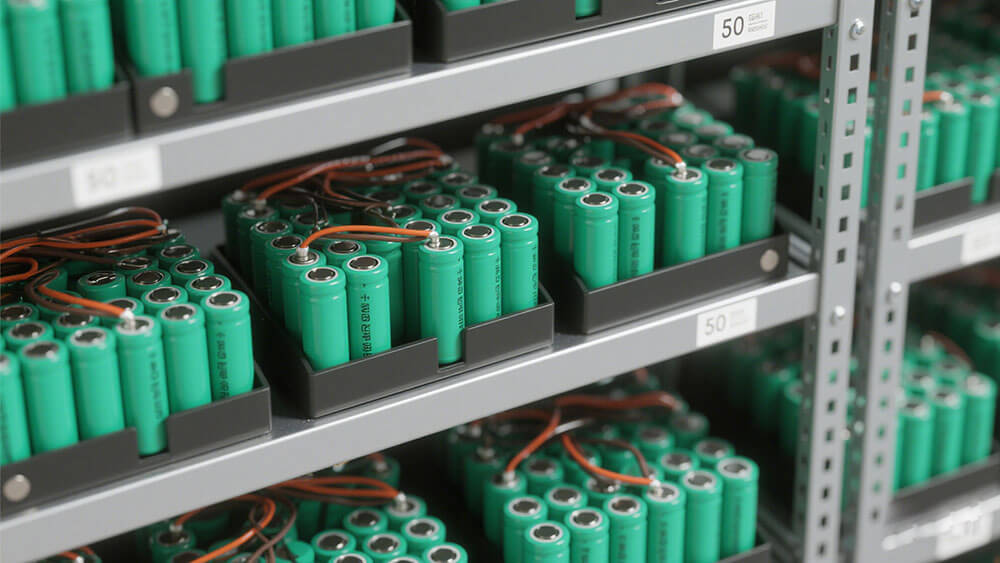
Part 1: Understanding Self-Discharge and How to Store lithium battery packs
1.1 What Is Self-Discharge in Lithium Batteries?
Self-discharge refers to the gradual loss of charge in a lithium-ion battery when it is not in use. This phenomenon occurs due to internal chemical reactions within the battery cells. While all batteries experience self-discharge, lithium-ion batteries typically lose 2-8% of their charge per month, depending on factors like temperature, battery chemistry, and storage conditions. For instance, NMC Lithium batteries, with an energy density of 160-270Wh/Kg, may exhibit slightly higher self-discharge rates compared to LiFePO4 Lithium batteries, which have a lower energy density of 100-180Wh/Kg but offer superior cycle life.
A study published in the Journal of Power Sources highlights a novel method for classifying lithium-ion battery cells based on self-discharge rates. This research emphasizes the importance of understanding self-discharge to optimize battery performance.
1.2 Why Self-Discharge Matters for Industrial Applications
For industrial applications like robotics, medical devices, and instrumentation systems, self-discharge can significantly impact operational efficiency. When you store lithium batteries for extended periods without proper precautions, they may lose charge to a point where deep discharging occurs. This can lead to irreversible damage, reducing the lifespan of the battery pack. For example, in medical devices, where reliability is critical, a poorly stored lithium-ion battery could compromise patient safety and increase maintenance costs.
To mitigate these risks, you must store lithium batteries at an optimal charge level of 40-50% in a controlled environment. This practice minimizes self-discharge and ensures the batteries remain ready for use. Additionally, selecting the right battery chemistry for your application is crucial. For instance, LiFePO4 Lithium batteries, with their extended cycle life of 2000-5000 cycles, are ideal for long-term storage in industrial settings.
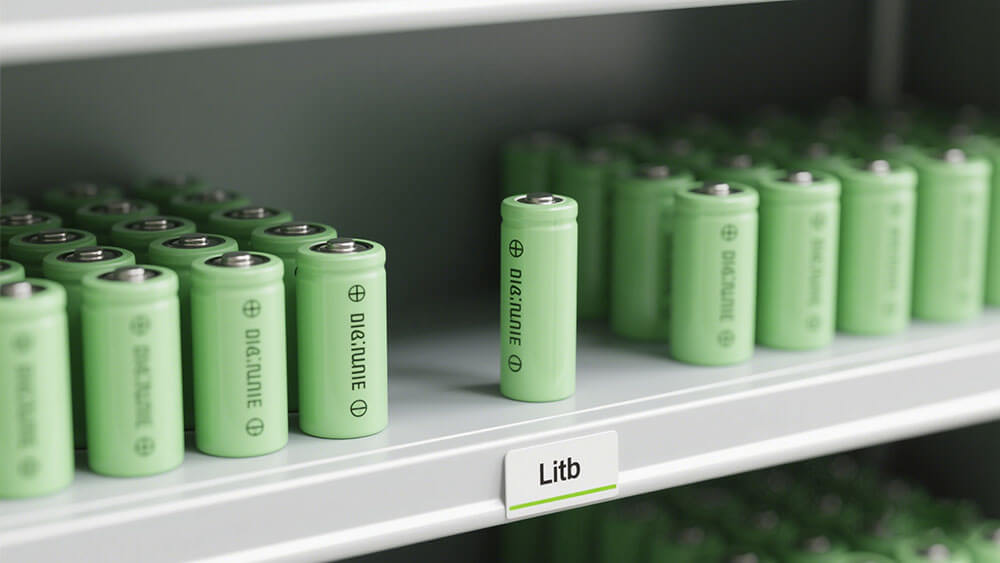
Part 2: Optimal Storage Charge Levels for Lithium Batteries
2.1 Recommended Charge Levels for Storage (40-50%)
Storing lithium batteries at an optimal charge level of 40-50% is critical for maintaining their performance and longevity. This range minimizes the stress on the battery's electrodes and reduces the risk of chemical degradation. Research from Chalmers University of Technology highlights that maintaining a 50% charge during storage can extend the lifespan of lithium-ion vehicle batteries by 44–130%. Similarly, experts recommend this charge level to prevent accelerated aging and damage caused by deep discharge.
Tip: Always check the charge level of your lithium-ion battery before storage. Use a battery management system (BMS) to monitor and maintain the recommended charge range.
The benefits of storing lithium batteries at 40-50% charge include:
Reduced Stress on Electrodes: Lower charge levels decrease the strain on the cathode and anode, preserving their structural integrity.
Minimized Risk of Overvoltage: Keeping the charge below 50% prevents overvoltage, which can lead to thermal runaway.
Enhanced Shelf Life: Batteries stored at this level experience slower capacity fade, ensuring they remain operational for longer periods.
2.2 Risks of Overcharging and Deep Discharging During Storage
Improper storage practices, such as overcharging or deep discharging, can severely impact the performance and safety of lithium batteries. Overcharging occurs when the battery's voltage exceeds its maximum threshold, leading to excessive heat generation and potential thermal runaway. On the other hand, deep discharging happens when the battery's charge drops below its minimum safe level, causing irreversible damage to the electrodes.
The risks associated with overcharging include:
Thermal Runaway: Excessive heat can trigger a chain reaction, resulting in catastrophic failure.
Electrolyte Decomposition: Overcharging accelerates the breakdown of the electrolyte, reducing the battery's capacity.
Shortened Lifespan: Prolonged overcharging increases internal resistance, leading to faster degradation.
Deep discharging poses equally significant risks:
Electrode Degradation: Low charge levels cause structural strain on the electrodes, reducing their effectiveness.
Increased Capacity Fade: Batteries subjected to deep discharge cycles lose capacity more rapidly.
System Failures: Deep discharges can cause battery management systems (BMS) and inverters to shut down, disrupting operations.
The following table summarizes findings from various studies on the impact of deep discharging:
Study | Findings |
|---|---|
Rumpf et al. (2015) | Increased DoD leads to faster capacity fade, stressing the cathode structure. |
Peterson et al. (2010) | High DoD accelerates degradation due to structural stress and side reactions. |
Yang et al. (2019) | Deeper discharge cycles increase mechanical stress, accelerating capacity loss. |
Schmalstieg et al. (2018) | Deep discharges contribute to increased capacity fade and internal resistance. |
Keil & Jossen (2017) | Limiting DoD extends battery lifespan by reducing degradation. |
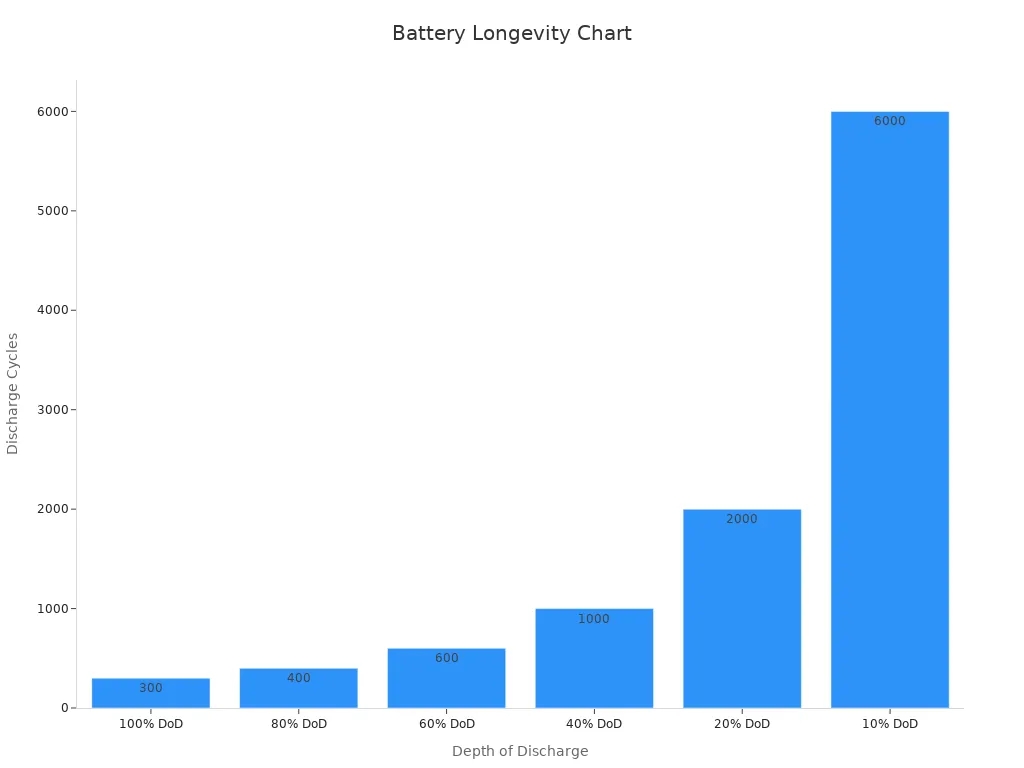
To avoid these risks, you should store lithium batteries at the recommended charge level of 40-50% and use a reliable BMS to monitor their condition. This practice ensures the batteries remain safe and ready for use in critical applications, such as medical devices, robotics, and instrumentation systems.
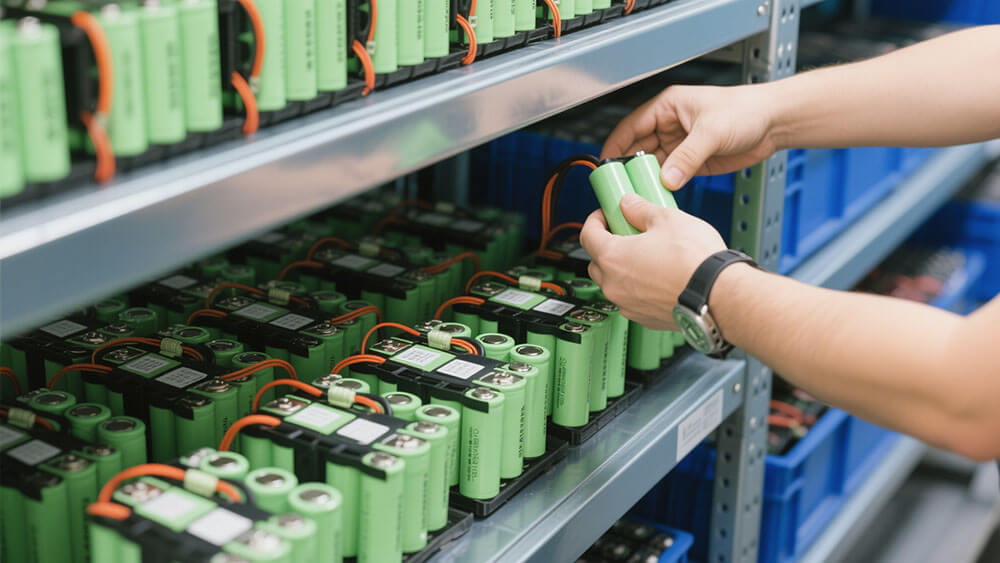
Part 3: Ideal Conditions to Store Lithium Batteries
3.1 Temperature Guidelines for Storage
Temperature plays a critical role in maintaining the performance and longevity of lithium-ion batteries. Improper temperature conditions can lead to capacity loss, safety risks, and reduced lifespan. To ensure optimal storage, you must adhere to the following guidelines:
Avoid Extreme Cold: Storing batteries in freezing conditions can cause lithium plating, leading to permanent capacity loss. This is especially critical for applications in robotics or medical devices, where reliability is paramount.
Prevent High Temperatures: While elevated temperatures may temporarily enhance performance, they accelerate aging and increase the risk of thermal runaway. For instance, every 1°C rise above the permissible range reduces battery life by approximately two months.
Maintain Optimal Range: The ideal storage temperature for lithium-ion batteries is between 15°C and 25°C. This range minimizes chemical reactions that degrade the battery's internal components.
Tip: Use temperature-controlled storage facilities to monitor and regulate conditions effectively. Training staff on proper battery management can further enhance safety and performance.
Finding | Description |
|---|---|
Temperature Impact | Every 1°C increase above permissible temperature reduces battery life by ~2 months. |
High Temperature Risks | At 45°C, heat accumulation can lead to thermal runaway and safety issues. |
Optimal Temperature Range | To maximize efficiency and life, battery temperature should be maintained between 15°C and 25°C. |
3.2 Humidity and Environmental Factors
Humidity is another critical factor that affects the condition of lithium-ion batteries during storage. Excess moisture can trigger adverse chemical reactions, leading to capacity loss and safety hazards. Here’s how humidity impacts battery performance and how you can mitigate these risks:
Moisture-Induced Reactions: Humidity can react with the electrolyte, forming hydrofluoric acid (HF). This damages the Solid Electrolyte Interphase (SEI) layer, leading to electrolyte decomposition and active lithium consumption.
Stable Conditions: Maintaining a controlled environment with low humidity levels prevents these reactions and minimizes self-discharge rates.
Comprehensive Monitoring: Humidity is one of eight factors influencing the State of Charge (SOC) prediction for batteries. Other factors include pack cell temperature, ambient temperature, and pack voltage.
Note: Use dehumidifiers and ensure proper ventilation in storage areas to maintain a dry environment. This practice is particularly important for industrial applications like instrumentation devices, where precision and reliability are essential.
3.3 Best Practices for Choosing a Storage Location
Selecting the right storage location is crucial for ensuring the safe storage and longevity of lithium-ion batteries. Follow these best practices to optimize storage conditions:
Inspect the Batteries: Before storage, check for any physical damage or defects. Damaged batteries can pose safety risks and should be handled with care.
Partially Charge the Batteries: Charge batteries to 40-50% capacity before storing. This minimizes stress on the electrodes and reduces the risk of deep discharge.
Store in a Cool, Dry Place: Avoid areas with high humidity or extreme temperatures. The ideal storage range is between 15°C and 25°C.
Ensure Proper Ventilation: Good airflow prevents heat buildup and controls moisture levels.
Avoid Direct Sunlight: Exposure to sunlight can cause overheating and degrade the battery's internal components.
Environmental Benefit | Description |
|---|---|
Renewable energy sources | Lithium-ion batteries can store energy from renewable resources, reducing reliance on fossil fuels. |
Resilience | Stored energy aids recovery during power outages or disasters, enhancing energy security. |
Long service life | These batteries can be recharged many times, leading to less electronic waste over time. |
Smarter energy use | Devices powered by these batteries can help monitor and manage energy efficiency effectively. |
Reminder: Always store lithium batteries on racks to allow air circulation. This prevents heat accumulation and ensures consistent performance. For industrial applications, such as energy storage systems, adhering to these practices can significantly enhance battery lifespan and reliability.

Part 4: Maintenance Practices for Stored lithium battery packs
4.1 Periodic Charge Level Checks and Recharging
Regularly checking the charge levels of stored lithium-ion batteries is essential for maintaining their health and performance. Batteries stored for extended periods can experience self-discharge, which may lead to deep discharging if left unchecked. To minimize self-discharge, you should inspect the state of charge (SOC) every three to six months and recharge the batteries to the recommended 40-50% level if necessary. This practice prevents over-discharge and ensures the batteries remain operational for critical applications like medical devices or robotics.
Predictive maintenance frameworks, supported by machine learning algorithms such as the Improved Random Forest (IRF), can enhance this process. These frameworks provide real-time diagnostics and SOC estimation, enabling proactive interventions. By leveraging such technologies, you can extend the lifespan of lithium-ion batteries and reduce maintenance costs.
4.2 Cycling Recommendations for Long-Term Storage
For long-term storage, periodic cycling of lithium-ion batteries helps maintain their capacity and prevents degradation. Cycling involves discharging and recharging the batteries within a controlled range. Studies on Al2O3-coated NCM cathodes demonstrate that periodic cycling enhances stability by preventing surface degradation and cracking. This approach is particularly beneficial for NMC Lithium batteries, which have an energy density of 160-270Wh/Kg and a cycle life of 1000-2000 cycles.
To implement cycling effectively:
Discharge the battery to 30-40% and recharge it to 50-60% every six months.
Use a battery management system (BMS) to monitor and control the cycling process.
Avoid full discharges or overcharging, as these can accelerate capacity fade.
4.3 Safe Handling and Inspection During Maintenance
Safe handling and regular inspections are critical to preventing damage and ensuring the longevity of lithium-ion batteries. Before performing maintenance, inspect the batteries for physical damage, corrosion, or swelling. Damaged batteries pose safety risks and should be handled with caution. Follow these best practices during maintenance:
Maintenance Practice | Description |
|---|---|
Regular Inspections | Check for physical damage, corrosion, and temperature anomalies. |
Temperature Management | Ensure proper ventilation and cooling to prevent overheating. |
Proper Charging Practices | Use compatible chargers and avoid overcharging. |
Adhere to Manufacturer Guidelines | Follow the manufacturer's recommendations for maintenance and service intervals. |
Incident reports highlight the importance of safe handling procedures. For example, guidelines from the University of Washington emphasize the need for proper storage and handling to prevent fire hazards and injuries. By adhering to these protocols, you can ensure the safety and reliability of your battery packs.
Proper storage and maintenance of lithium-ion batteries are essential for preserving their performance and extending their lifespan. Key strategies include storing batteries at 40-50% charge, maintaining optimal temperature and humidity levels, and conducting periodic inspections. Research shows that lithium-ion batteries stored at room temperature for three years exhibit minimal capacity loss, highlighting the effectiveness of these practices.
Adopting these measures not only ensures operational readiness but also reduces costs associated with premature battery replacements. For example, careful management of operating conditions minimizes replacement expenses, especially for utility-scale energy storage systems. Businesses can achieve long-term savings and reliability by implementing these proven strategies to store lithium batteries effectively.
FAQ
1. How often should you check the charge level of stored lithium batteries?
You should inspect the charge level every three to six months. This practice prevents deep discharging and ensures the batteries remain operational.
Tip: For professional guidance on the charge level of stored lithium batteries, visit Large Power.
2. Can extreme temperatures damage lithium batteries during storage?
Yes, extreme temperatures can harm lithium batteries. High heat accelerates aging, while freezing conditions cause lithium plating, leading to permanent capacity loss.
3. Why is it important to store batteries at 40-50% charge?
Storing batteries at 40-50% charge minimizes stress on electrodes, reduces chemical degradation, and extends their lifespan, ensuring they remain ready for use.
Leave Message
Hottest Categories
-
Hottest Industry News
-
Latest Industry News




